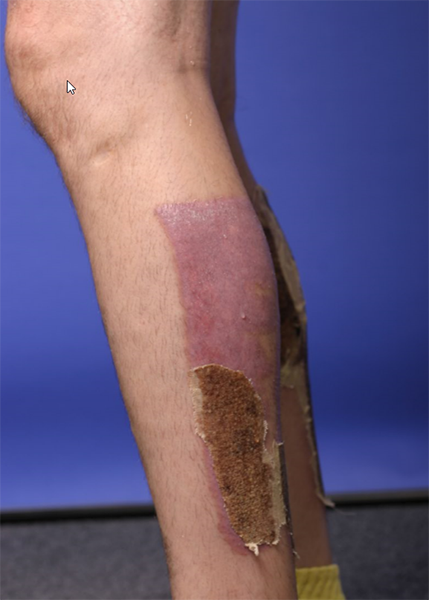Last Updated on January 25, 2019 by The Young Firm

Levels of Burn Severity
A burn is a skin injury caused by heat, electricity, chemicals, light, radiation or friction. Burn injuries can range from mild to life-threatening. Burns are generally classified as first-degree, second-degree, or third-degree.
First-Degree Burns
First-degree burns are superficial and affect only the outermost layer of skin. These burns are limited to redness, perhaps a white plaque, and tolerable pain. They often heal with minor medical treatment.
Second-Degree Burns
In second-degree burn injuries, both the outer and deeper layers of the skin are involved. Second-degree burns involve a blistering on the surface of the skin. If nerves are damaged, they can cause significant amounts of pain. They must be treated by a medical professional in order to avoid infection.
Third-Degree Burns
In third-degree burns, the outer layer of the skin is burned away. There may be significant damage to the lower layers of skin and even to the muscles and bones. Third-degree burns always result in scarring and the loss of skin. Victims may need surgery and skin grafts. There is a significant risk of potentially fatal complications such as
- respiratory distress,
- shock, and
- infection
Third-degree burns require extensive hospitalization and victims may also require significant psychological and emotional support to deal with the resulting physical disability, scarring, and physical deformity.
Fourth-Degree+ Burns
Fourth-degree, fifth-degree, and sixth-degree burns are often fatal. In these burns, skin is burnt away and there is significant muscle and bone damage. Survivors may be paralyzed and the burn areas may require amputation.
These burns require that victims spend significant time in the hospital. Once they are released, they may face months or even years of physical therapy. Victims are often left unable to work and with substantial medical bills.
5 Complications of Serious Burn Injuries after a Maritime Accident
Any burn covering more than a 3-inch area is a serious burn. These kinds of burns, as well as deep burns, can lead to:
- Infection – When skin is burned, your major protective barrier is compromised.
- Sepsis – This life-threatening condition results from an infection that rapidly progresses.
- Hypovolemia – This happens when a burn injury damages blood vessels and causes your body to lose blood and other bodily fluids.
- Hypothermia – This results from loss of body heat from your damaged skin.
- Joint difficulties – If scar tissue builds up, your joints will be susceptible to falling out of alignment.
The expenses of treating a severe burn injury are costly. To hold negligent parties accountable for your horrific diving accident, you should consult with a Jones Act attorney.
Maritime law is designed to protect maritime workers who have high-risk jobs. Your right to maintenance and cure means that your company must pay the cost of all treatment that is reasonable and related to your injury. If your accident was caused by the negligence of your employer, you have the right to sue your employer for your injury and damages under Jones Act Law.
You can learn more about your rights and maritime claims in our free resources. If you have any questions, contact the Jones Act attorneys at the New Orleans office of The Young Firm at 504-680-4100.
More articles on maritime injuries:

